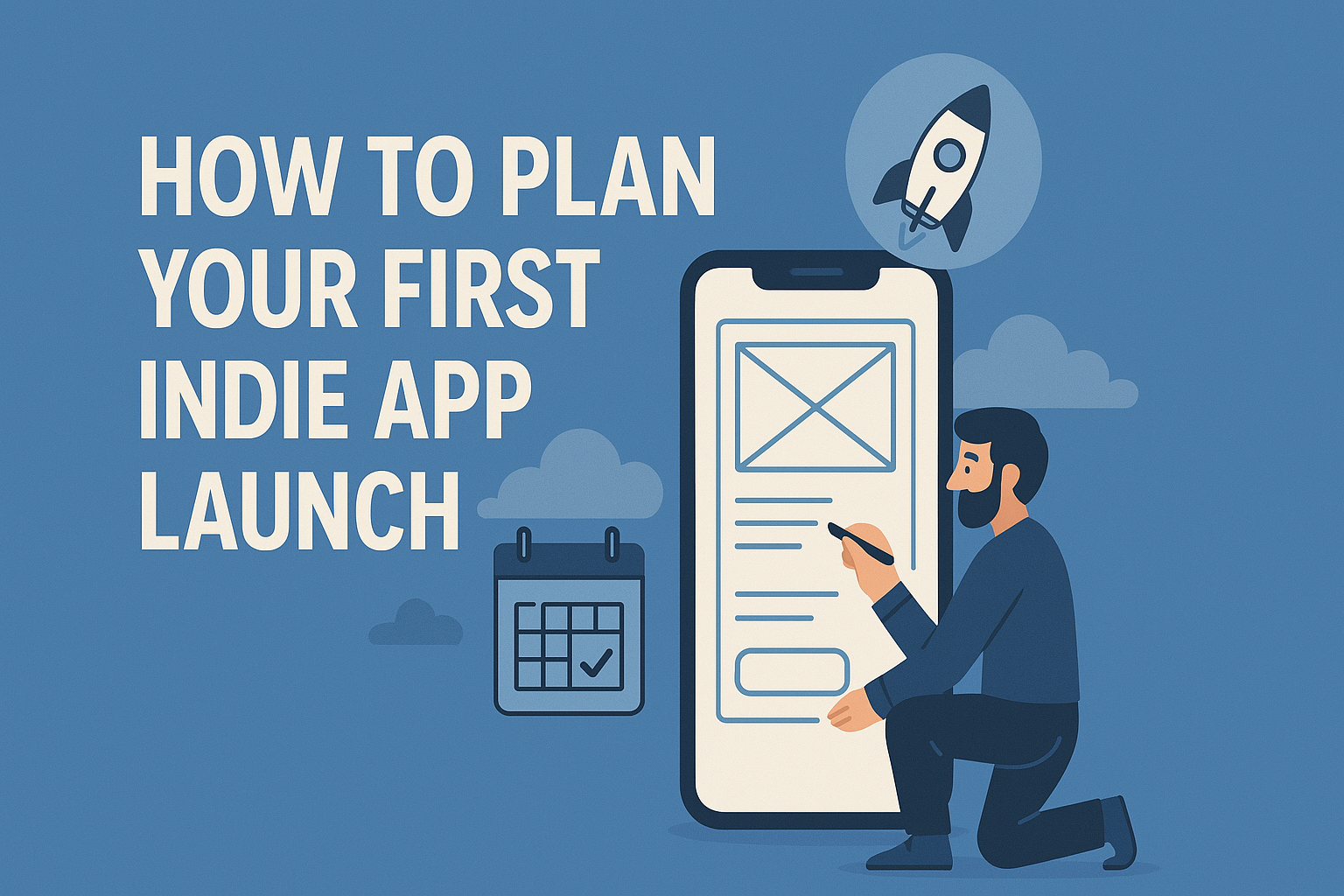How to Plan Your First Indie App Launch
 Co Launchly
Co Launchly
You’ve built something cool. Maybe it’s a side project, maybe it’s your first real shot at an indie app. You’re proud of the code, the design is slick, and the core features are working. Now comes the part most developers avoid or delay: the launch.
If you’ve never launched before, the idea of “launching” can feel vague or overwhelming. What do you actually do? When should you start? Who do you tell?
This guide is for you. Here’s how to plan your first indie app launch step by step—without needing a marketing degree.
1. Start Before You're Ready
The biggest mistake devs make is waiting until the product is “done” to think about launching. But launch prep isn’t a one-day event. It’s a series of small actions, done early, that build interest and momentum.
Start by answering three questions:
Who is this for? Be specific. “Developers” is vague. “Frontend devs who hate writing backend code” is better.
What problem are you solving? Write it in plain English.
Why now? Is there a shift or trend that makes your app more relevant today?
Even rough answers will help you write better tweets, landing pages, and emails later.
2. Pick a Launch Goal
Not all launches are the same. Choose one primary goal:
Build a waitlist
Get feedback from early users
Grow your following
Drive sales
Get featured on Product Hunt
Your launch strategy depends on this goal. A feedback-focused soft launch looks very different from a full-on Product Hunt push.
3. Create a Lightweight Launch Plan
Here’s a simple launch plan structure you can follow:
Phase 1: Pre-Launch
Share behind-the-scenes content on Twitter/LinkedIn
Create a landing page with a waitlist form
Set up an email sequence for new signups
Reach out to potential early users manually
Phase 2: Launch Week
Announce the launch on social platforms (with screenshots or demo video)
Email your list
Post in relevant communities (subreddits, Indie Hackers, Discords)
Submit to directories (Betalist, StartupBase, etc.)
Phase 3: Post-Launch
Share wins and learnings publicly
Follow up with new users
Collect testimonials or feedback
Plan your next growth experiment
4. Use Templates and Tools (like CoLaunchly)
Marketing doesn’t have to be invented from scratch. Use templates for:
Social media posts
Launch emails
Product Hunt copy
Landing page messaging
CoLaunchly gives you all of this. It’s built to take the guesswork out of launching—just tell it what you’re building, and it creates a personalized roadmap, content templates, and channel recommendations based on your app and audience.
5. Don’t Launch Alone
Launching can feel lonely if you're doing it in a vacuum. Join a community of indie hackers or dev founders. Share your progress. Ask for feedback. Offer help to others.
You’ll not only feel more motivated, but you’ll also have people rooting for you when launch day comes.
Final Thought: It’s Just the Beginning
Your launch isn’t the end—it’s the starting line. The real game is learning how to grow, improve, and connect with users over time.
But if you plan just a little, and launch with intention, you’ll be way ahead of most first-time indie founders.
Want help launching your app?
👉 Join the CoLaunchly waitlist or hop into our Discord to get early access and launch support.
Subscribe to my newsletter
Read articles from Co Launchly directly inside your inbox. Subscribe to the newsletter, and don't miss out.
Written by

Co Launchly
Co Launchly
Your personal marketing co-pilot built for developers. Get a custom launch strategy, content templates, and checklists, zero fluff, 100% focused on shipping your product.